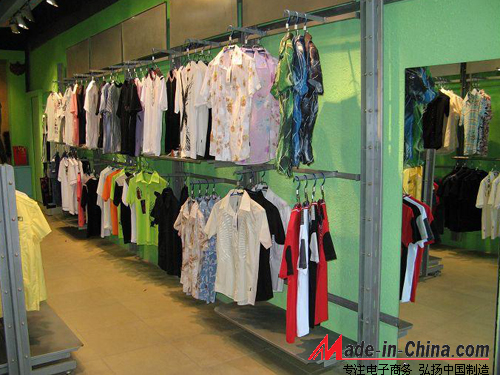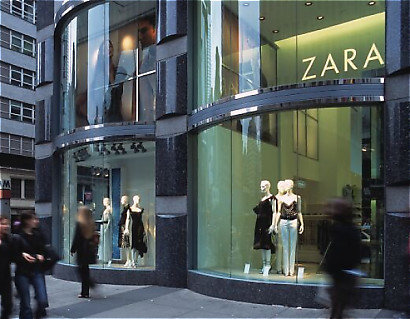 On July 15, the Boston Consulting Group (BCG) released its latest report, saying that in the past 10 years, the market size of the Chinese fashion industry has tripled and by the end of 2010 it has reached 400 billion yuan***. The report pointed out that the Chinese fashion market is expected to grow by about twice in the next decade, becoming one of the world's largest fashion retail markets, and it is expected to reach more than 1.3 trillion *** in 2020.
On July 15, the Boston Consulting Group (BCG) released its latest report, saying that in the past 10 years, the market size of the Chinese fashion industry has tripled and by the end of 2010 it has reached 400 billion yuan***. The report pointed out that the Chinese fashion market is expected to grow by about twice in the next decade, becoming one of the world's largest fashion retail markets, and it is expected to reach more than 1.3 trillion *** in 2020. According to the report, the number of middle class and affluent consumers in China (defined as nominal income in 2010, with an annual income of 74,000 yuan*** or over 11400 US dollars) will increase from the current 50 million to 140 million in 2020. The space development of the clothing market is very impressive and contains opportunities, attracting the attention of many brands and businesses.
Foreign brands have poured into

ZARA

H&M
In recent years, more and more foreign brands have faced sales bottlenecks in Europe and the United States. Perhaps it is the Chinese clothing market that has such a great potential, and has once set its sights on emerging Asian markets. In affordable brands, H&M, ZARA, the fast fashion leader, has occupied a place in China within a few short years of entering the market and its market share has grown rapidly. H&M revealed in its earnings report that it will add 250 stores this year, including China, the United Kingdom and the United States. Zara's company, Spain's Inditex Group, has opened 75 new stores in China in 2010, covering 30 cities, and this year it will expand to 42 cities; in 2010, the entire Asian market accounted for 15% of Inditex's global sales. Compared with the previous year, it rose by 3%. TOMMY HILFIGER, a well-known American casual brand, announced recently that it will establish the position of President of Asia for the first time to expand into Asian markets including China and Japan.
According to relevant sources, although the absolute market share of multinational apparel brands such as ZARA and H&M in China is not large, compared with Chinese local brands, these brands still have the upper hand in leading fashion trends in the first-tier cities.
In addition to the tidal brands that have entered China in succession, many luxury brands have also expressed their emphasis on the Chinese market. In 2010, the consumption of luxury goods in mainland China increased by 30% year-on-year, far faster than the growth rates in Asia Pacific (23%) and the world (12%). It is predicted that in 2012, China will surpass Japan to become the world’s largest consumer of luxury goods. In June of this year, Italian top brand Prada (PRADA) in Hong Kong IPO, Burberry, COACH and other brands will also be listed one after another. In addition to the higher valuation premium, the Greater China region, especially mainland China, took over. The increase in luxury consumption of the eyeball is a more important reason. Faced with shrinking Western markets, the growth rate of the Asian luxury market has brought warmth to the entire industry, which is becoming the first choice for luxury brands to open up the market.
Foreign investors test online shopping market

Macy's

Gap
The report said that by 2015, the number of online shoppers in China will increase to 329 million (2010, 145 million). The importance of online shopping is increasing day by day, and US retailers are also eyeing China’s online spending. Recently, the US department store carrier Messi Department Store announced that its Macy's chain and Bloomingdale's chain department stores have opened online shopping delivery services to 91 countries, including China. Although Macy’s did not open a branch in China, it opened channels for online shopping to Chinese consumers, removing the cosmetics and home appliances that could not be purchased because of some policies and actual conditions. Most of the products were clothing, bags, footwear, etc. Jewelry, household items, etc. can be purchased. In addition, GAP, a US casual wear brand, also set foot in China last year, first testing water e-commerce, and then opened a physical store.
How does the domestic apparel market respond? With the development of China's economy and the influx of international brands at all price levels, luxury and affordable brands are rapidly expanding the market network in China. Chinese consumers feel that imported brands are not just luxury goods. It can be very cheap and stylish. The concept of shopping for Chinese consumers is being changed, brand awareness and consumer awareness are also increasing, which adds more challenges to domestic brands.
On the one hand, as raw material prices rise and labor costs increase, companies generally feel the pressure of development. On the other hand, with the adjustment of the national department store industry, the proportion of international brands in the department store industry and shopping centers will be higher and higher, to a certain extent, suppressing the development space of local brands. Take the children's wear market as an example, with the luxury Brand children's wear products have gradually entered the high-end market in China. The famous children's wear brands such as Balabala and Babbean have become "second line." It is reported that 74% of brands in Beijing and Shanghai shopping centers are international brands. It seems that the high-end market for local brands is still relatively blank.
According to relevant sources, there is a difference in domestic apparel companies compared to international ones, and domestic brands are not inherited by foreign countries. Therefore, they need to invest time and brands to build. The domestic fashion industry is still quite young. In balancing the issue of domestic sales or exports, how to quickly occupy the local market is definitely the first thing the company does. From the popularity and rapid expansion of foreign brands, we can see that the demand for high-end and trend in the domestic market is continuously growing. Therefore, local brands should also aim at this gap, invest more energy, improve management concepts and methods, production and design. Ability to develop its own brand and strengthen its brand competitiveness.
Feather Flip Flops,Womens Casual Flip Flops,Feather Womens Flip Flops,Flat Foam Slippers
Rubber Flip Flop,Beach Flip Flop,Slipper Co., Ltd. , http://www.evaslipper.com